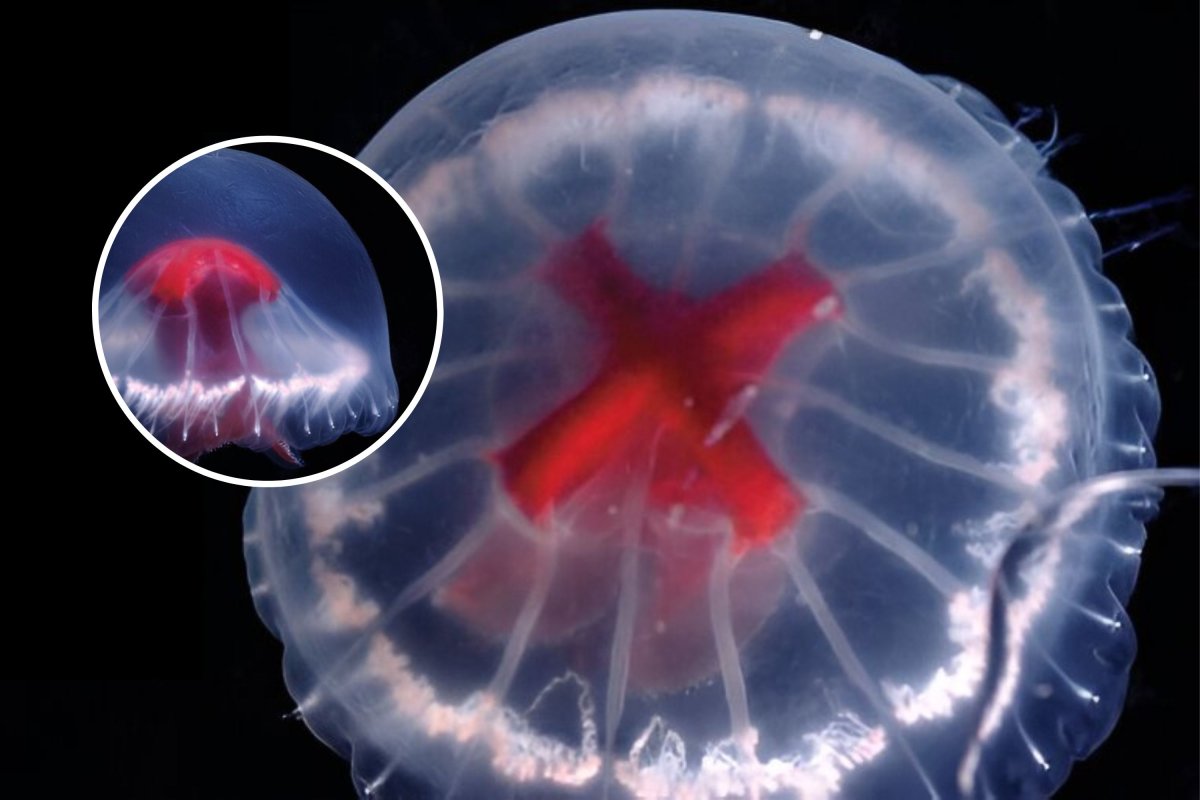A new jellyfish species possessing potentially never-before-seen venoms has been found deep underwater. The Santjordia pagesi, as it’s called, was found at a depth of 2,664 feet near Japan’s Ogasawara Islands, near the Sumisu Caldera. This new species, with an umbrella shape and a red cross in the center of its body, earned the common name St. George’s Cross Medusa. It measures about 4 inches across and has only been spotted twice. Its DNA analysis revealed its distant relation to all other known jellyfish species, leading to the establishment of a new genus and subfamily.
Moreover, the scientists speculate that due to its unique evolutionary traits, the jellyfish may carry a variety of venoms that are distinctly different in chemical composition compared to any seen before. The St. George’s Cross Medusa is mainly transparent, except for the red cross marking on its body, which is believed to make it harder for predators to spot bioluminescent food inside its belly. This distinct coloring, the scientists suggest, may be linked to capturing food.
The jellyfish was first spotted in 2002 and was captured for DNA analysis. It wasn’t seen again until 2020, when it was filmed but eluded capture. The rarity of the S. pagesi led to the designation of a new species after the study of a single specimen and another sighting. The researchers are hopeful for more sightings of this rare jellyfish in future expeditions to the deep-sea volcano.
The discovery of this unique species in a commercially promising area has prompted the researchers to advocate for conservation efforts, stressing the need for research collaboration with partners who have interests in preserving such unique habitats.
New jellyfish species discovered may have an arsenal of unique venoms













